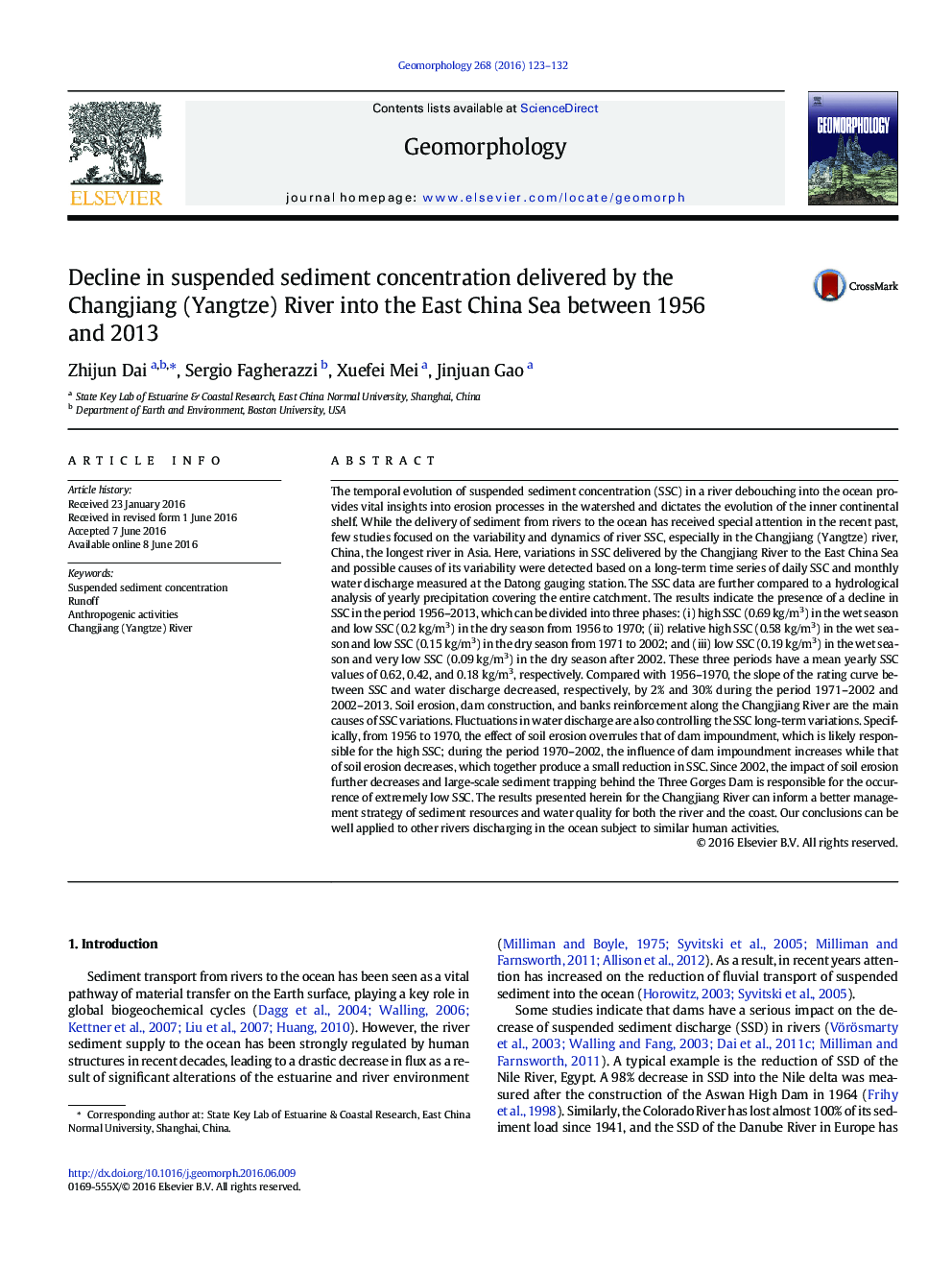| کد مقاله | کد نشریه | سال انتشار | مقاله انگلیسی | نسخه تمام متن |
|---|---|---|---|---|
| 4683967 | 1635381 | 2016 | 10 صفحه PDF | دانلود رایگان |
• Decline in daily SSC from Changjiang into the sea between 1956–2013.
• Fluctuations in water discharge are one of the controlling factors of SSC long-term variations
• Large-scale soil erosion in the 1950s was likely responsible for the high SSC in the corresponding period.
• Combination of land reclamation, sediment storage in reservoirs, and the blocking effect of riverbanks produced low SSC.
The temporal evolution of suspended sediment concentration (SSC) in a river debouching into the ocean provides vital insights into erosion processes in the watershed and dictates the evolution of the inner continental shelf. While the delivery of sediment from rivers to the ocean has received special attention in the recent past, few studies focused on the variability and dynamics of river SSC, especially in the Changjiang (Yangtze) river, China, the longest river in Asia. Here, variations in SSC delivered by the Changjiang River to the East China Sea and possible causes of its variability were detected based on a long-term time series of daily SSC and monthly water discharge measured at the Datong gauging station. The SSC data are further compared to a hydrological analysis of yearly precipitation covering the entire catchment. The results indicate the presence of a decline in SSC in the period 1956–2013, which can be divided into three phases: (i) high SSC (0.69 kg/m3) in the wet season and low SSC (0.2 kg/m3) in the dry season from 1956 to 1970; (ii) relative high SSC (0.58 kg/m3) in the wet season and low SSC (0.15 kg/m3) in the dry season from 1971 to 2002; and (iii) low SSC (0.19 kg/m3) in the wet season and very low SSC (0.09 kg/m3) in the dry season after 2002. These three periods have a mean yearly SSC values of 0.62, 0.42, and 0.18 kg/m3, respectively. Compared with 1956–1970, the slope of the rating curve between SSC and water discharge decreased, respectively, by 2% and 30% during the period 1971–2002 and 2002–2013. Soil erosion, dam construction, and banks reinforcement along the Changjiang River are the main causes of SSC variations. Fluctuations in water discharge are also controlling the SSC long-term variations. Specifically, from 1956 to 1970, the effect of soil erosion overrules that of dam impoundment, which is likely responsible for the high SSC; during the period 1970–2002, the influence of dam impoundment increases while that of soil erosion decreases, which together produce a small reduction in SSC. Since 2002, the impact of soil erosion further decreases and large-scale sediment trapping behind the Three Gorges Dam is responsible for the occurrence of extremely low SSC. The results presented herein for the Changjiang River can inform a better management strategy of sediment resources and water quality for both the river and the coast. Our conclusions can be well applied to other rivers discharging in the ocean subject to similar human activities.
Figure optionsDownload as PowerPoint slide
Journal: Geomorphology - Volume 268, 1 September 2016, Pages 123–132
